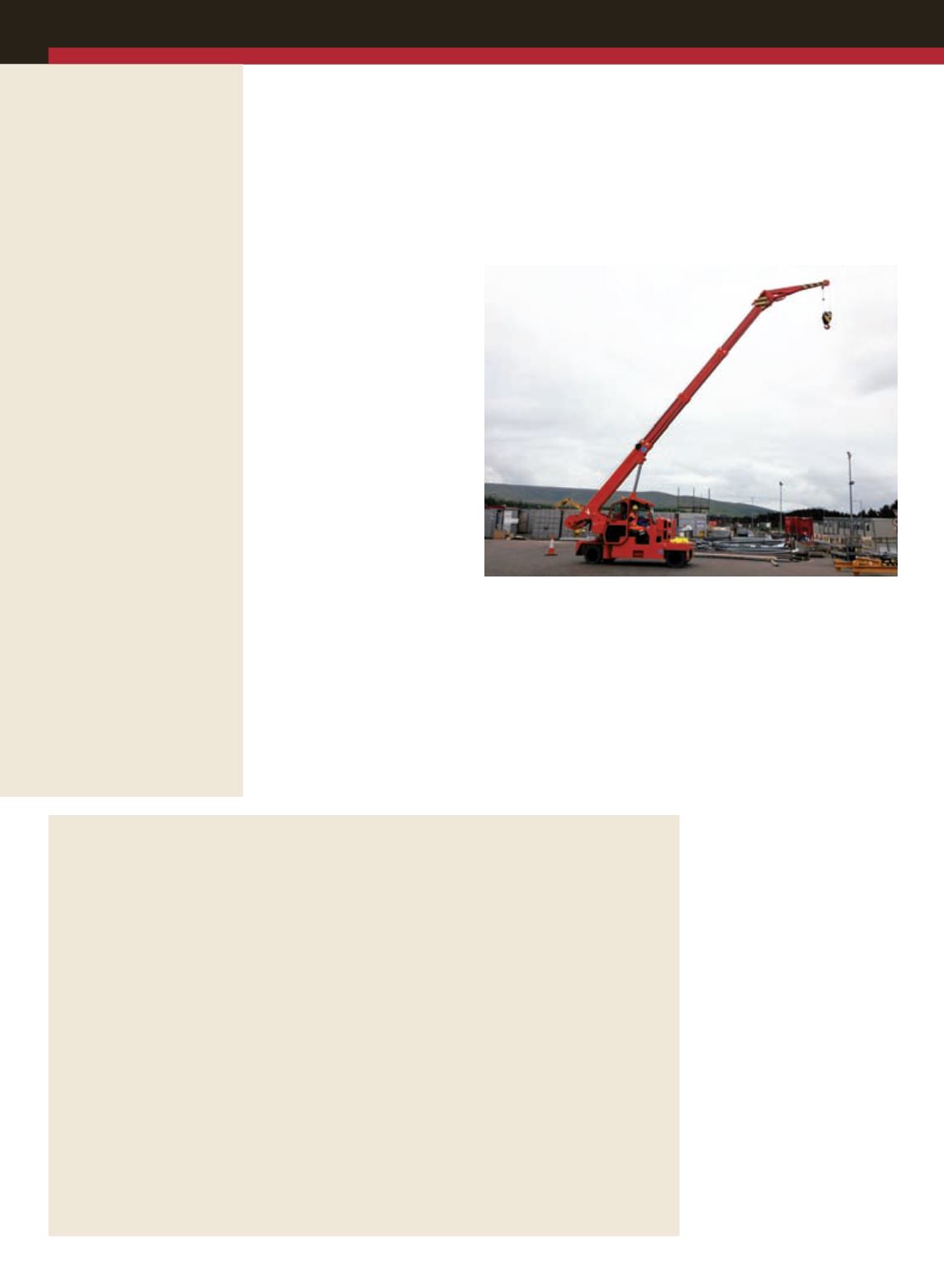
NEWS
10
ACT
DECEMBER 2013
Manitex reports
earnings and Valla
Cranes purchase
On the heels of the
announcement of positive
third-quarter financial
results, Manitex International
announced that it will
purchase Valla Cranes. The
company said that subsequent
to the quarter’s end, it had
reached an agreement in
principle to acquire Valla
SpA of Piacenza, Italy. Valla,
a maker of mobile industrial
cranes, posted $7.5 million
in revenues in 2012. The
purchase price was not
revealed.
Founded in 1945, Valla
manufactures a full range of
mobile cranes with capacities
from 2 to 90 tons. Valla cranes
include electric, diesel, hybrid,
wheeled and tracked as well as
fixed and swing booms.
Manitex International
posted net revenues of $57.5
million, an 8 percent rise as
compared to $53.4 million
in the prior year’s quarter.
Revenue declined 8 percent
compared to the record
second quarter 2013 revenues
of $62.6 million.
The company reported that
it completed the acquisition
of Sabre Manufacturing
on August 19 for total
consideration of $14 million.
It also completed new multi-
lender North American
$64 million revolving credit
facilities, including Comerica
Bank, Fifth Third Bank and
HSBC.
Also in the third quarter,
Manitex International
completed a registered direct
equity offering for 1.4 million
shares with net proceeds of
$14 million, which was used
to repay debt.
Of the financial results,
Chairman and CEO David
Langevin, said “Despite a
very slow overall economic
environment, we posted
another solid quarter of
growth, putting us on
pace to reach a record
level of sales and profits
for the full year 2013. We
intend to continue to grow
through the introduction of
innovative niche products,
such as our new 15-, 30-and
70-ton crane models along
with acquisitions such as
Sabre, which closed during
the quarter, which fit our
specialized product strategy.”
Regarding the Valla
purchase, Andrew Rooke,
president and COO, said
the Valla crane line fits in
well with its niche product
offerings.
■
Manitex International
will purchase Italy-
based Valla Cranes.
FMCSA proposes regulatory
changes for military drivers
A new study released by the U.S. Department of Transportation’s Federal Motor Carrier Safety
Administration (FMCSA) has recommended a series of regulatory changes to further ease the transition
of military personnel and veterans into civilian jobs driving commercial motor vehicles.
The study looked at training, testing and licensing similarities and differences between military and
civilian commercial driver’s license (CDL) requirements. A number of federal and state regulatory changes
were identified that would allow returning U.S. military personnel possessing extensive training and
experience operating trucks, buses and other heavy equipment to more easily receive a state-issued CDL.
The FMCSA proposes:
■
Extending the period of time, from 90 days to one year, in which active duty and recently separated
veterans can take advantage of a Military Skills Test Waiver.
■
Updating federal regulations to allow over 60,000 service members trained and employed in the
operation of heavy vehicles to immediately qualify for a CDL while still on active duty.
■
Allowing a service member who is stationed in one state, but licensed in another, to obtain a CDL
before being discharged.
“The demand for truck drivers will continue to rise in the coming years, so we are taking action to
remove the obstacles that prevent military veterans from finding employment in the industry,” said
FMCSA Administrator Anne Ferro. From 2010 to 2020, the need for heavy-vehicle drivers is expected to
grow by more than 17 percent - faster than the national average for other occupations.
■
Mammoet Salvage is
removing up to 700 tons of
bunker fuel from the
Brigadier
General M.G. Zalinski
, a U.S.
Army transport ship that sank
in 1946 off Canada’s west
coast, south of Prince Rupert,
Canada. Although the crew
survived, the wreck went down
with bombs and ammunition
in its holds, and the bunker
fuel. The ship wasn’t located
for decades; oil slicks spotted
in 2003 led to the Zalinski’s
discovery. Inspections revealed
that the fuel tanks of the
252-foot-long vessel were
seriously corroded. Mammoet
Salvage is using the hot
tapping method to extract the
oil from the shipwreck. First,
a hole is drilled through the
hull and into the tank, and then
a heat exchange element is
inserted. Applying heat lowers
the viscosity of the bunker fuel,
and allows it to be pumped
from the tanks to the surface,
and stored onboard a vessel.
Water is applied into the
tank to equalize pressure and
maintain the tanks’ integrity.
Mammoet’s strategic partner
is Global Diving & Salvage
from Seattle, WA. Mammoet
expected to finish the cleanup
operation in December.
HIGHLIGHT


